Shotguns are natural hosts for red dots. There are tons of people who will tell you that shotgun red dots are silly and all you need is the bead. Beads are fine, but red dots give you the speed of the bead, with the precision of a ghost ring sight, and they work in all lighting conditions. What red dot works best with your shotgun? I could give you my favorites, and I might in the future, but I’d rather help you learn how to pick the shotgun red dot that is best for you.
Running a Red Dot Optic on Your Shotgun
It seems easy: just grab a red dot and toss it on your gun. It’s not that complicated, right? No, it’s not complicated, but we want the best combination of optic and shotgun, right? We don’t throw Aimpoint T1s on handguns anymore, right? There are optimum options, and that’s the point of this article.
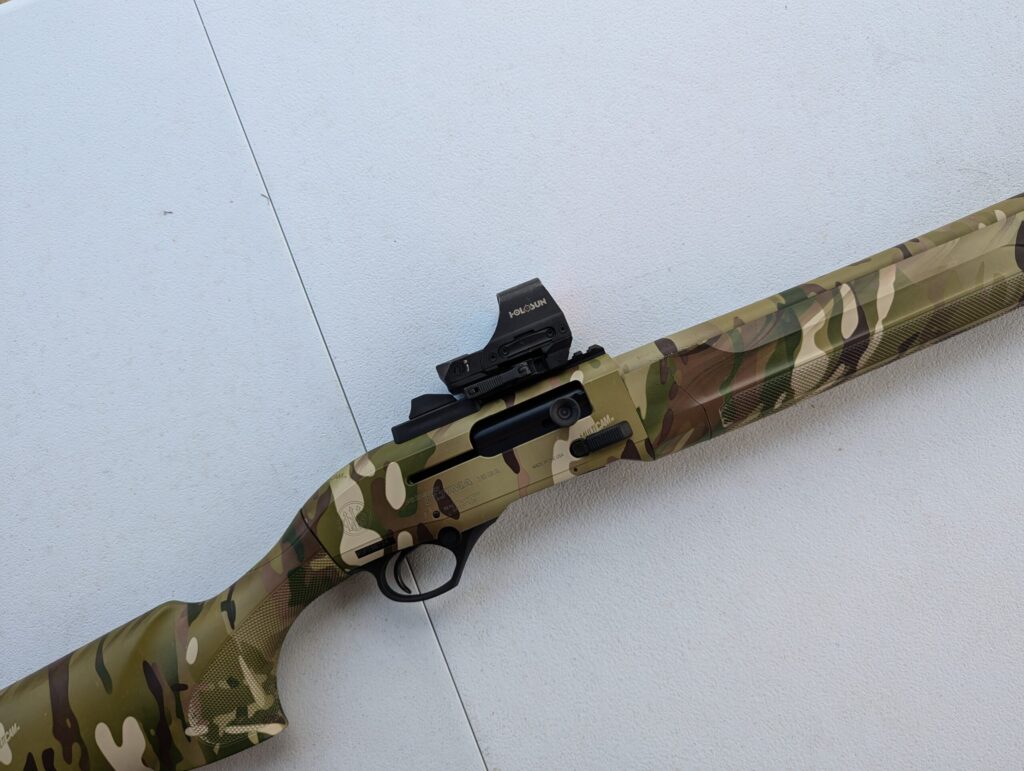
A lot of optics are just too big and sit too high. Optics like the EoTech series are made for AR carbines, so they sit quite high to work with an inline stock. On most shotguns, they sit too high. This might not be true if your shotgun uses an inline stock, like the Mossberg 590R, the Genesis 12-gauge guns, and all those Turkish abominations out there.
Those guns have their own parameters for red dots. This article focuses on your traditional shotgun with a traditional stock, or a non-inline stock design. This makes up the majority of the shotguns on the market.
Shotgun Red Dot Design
Shotguns work within the same ranges that handguns work in. With that in mind, a handgun red dot works pretty well on a shotgun. Pretty much all of my shotguns are wearing handgun dots. Their small size works exceptionally well on a shotgun. These little optics don’t get in the way as my hand goes over the top of the optic to port load, or to retrieve shells from a side saddle.
Aimpoint Minis work well too, and so do their clones. These types of optics do require the right mount to work well, but we’ll cover that in the next section.
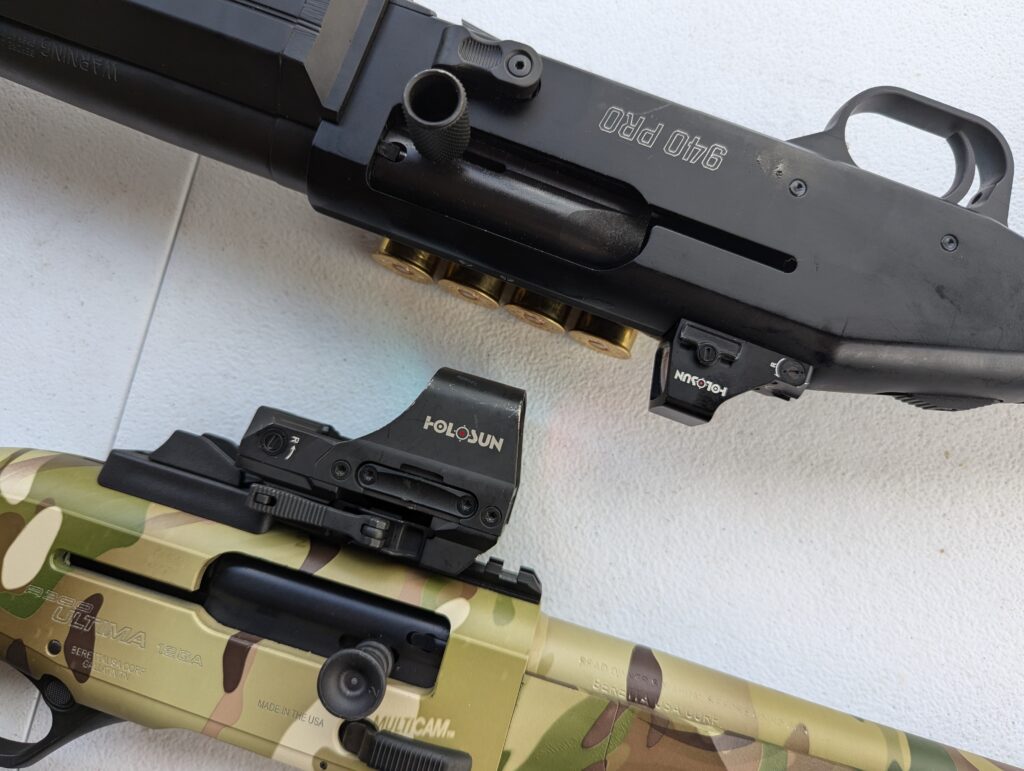
Enclosed or open emitters are common discussions amongst handgun users, and those same points come up here. I use both, but I’m a home defender. As a home defender, I don’t think an enclosed emitter is necessary. I’m not going to be fighting in the rain. If I’m going outdoors and I’m a cop or planning to survive the end of the world, then I want the extra reliability of an enclosed optic.
I generally want to be able to access the battery compartment without moving the optic. I also prefer my buttons to be large and easy to press. Those are little things, but I value them on a shotgun.
Mounting Systems
A big reason why I like handgun optics is how they mount. Directly mounting the optic to the gun is possible. Mossberg has wisely embraced this design with the RMSc footprint carved directly into their receivers, and I hope it’s the future of shotgun red dots.
Outside of direct mounting, there are shotgun-specific optic mounts that are designed to keep the optic as low as possible. Mounts like the Scalarworks SYNC and the Aridus CROM are excellent examples of low mounts. The CROM is a great Aimpoint T-1 option. Not to toot my own horn, but I helped design the CoSight from Defender Tactical, and I’m partial to it on Mossbergs.
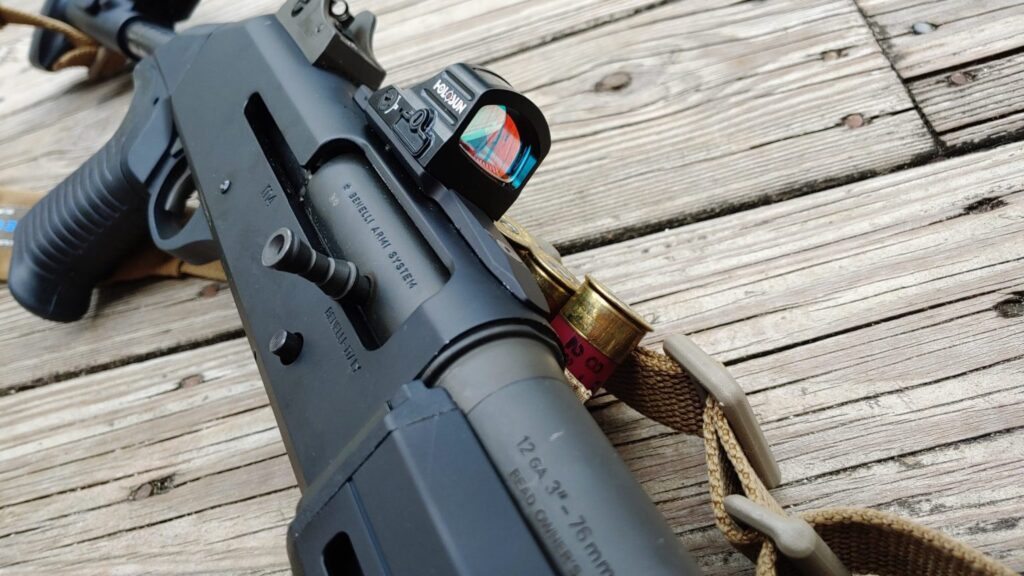
Picatinny rails and Picatinny adapters are fine. They do introduce a layer of stacked tolerances, but they work fine. It’s just not the optimum solution. Ultimately, I want to be able to mount the optic as low as possible. This means I’m going to review mounting options and take a look at the optic footprints they support.
Reticles
Don’t overthink the reticle too much. Big reticles are fine, and so are small reticles. You can use a 6 MOA, 2 MOA, or some variation of a 3 MOA dot. They all work fine. As long as you can quickly see it, acquire it, and put it on target, you’ll be fine.
If you want to get somewhat fancy, you can go with a circle-dot reticle. Holosun offers a ton of them. The new Vortex Vipers offer multiple circle-dot reticles, and the circle-dot has become very common on pistol red dots. The benefit of the circle-dot allows you to measure your patterns in coordination with the circle.
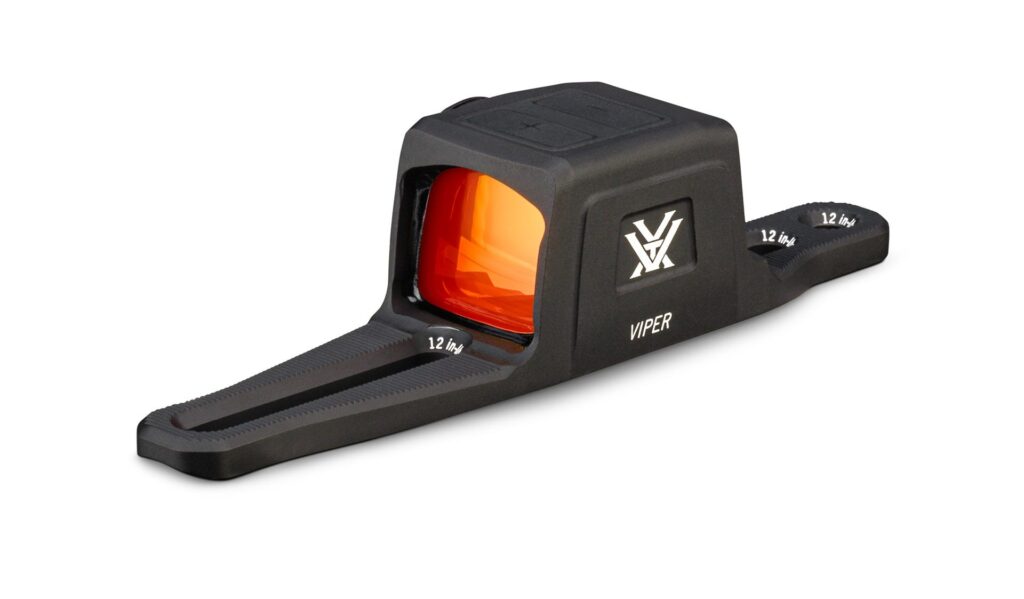
When you pattern your buckshot and zero your shotgun red dot, you can use your circle to know how far the buckshot spreads. For example, on my Benelli M4 with a Holosun 507C, I know that my choice of eight-pellet Federal Flitecontrol will remain inside that 32 MOA circle at 12 yards and closer.
For home defense, that’s perfect. I’m not taking a shot beyond 12 yards. Within twelve yards, I know every pellet will remain inside that circle. It gives me a nice, huge reticle that’s easy to see, and I have total pellet accountability.
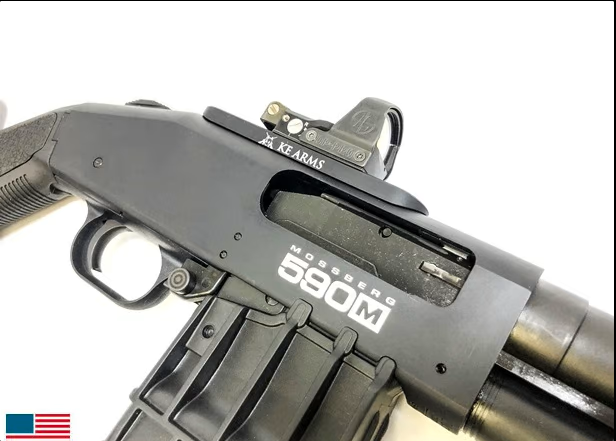
The Shotgun Red Dot
Shotgun red dots aren’t tough. Get a small red dot that mounts low and provides a bright and clear reticle. Everything else is secondary, and you can pick and choose from there. If you can do that, you’ll succeed.
Read the full article here













